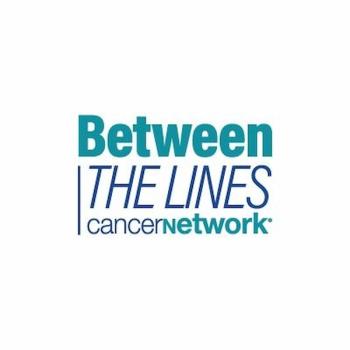
Expert oncologist/hematologists Bruce Cheson, MD, FACP, and Steven Park, MD, discuss findings from the E7438-G000-101 trial and consider the efficacy of tazemetostat as treatment for relapsed or refractory follicular lymphoma.

Your AI-Trained Oncology Knowledge Connection!


Expert oncologist/hematologists Bruce Cheson, MD, FACP, and Steven Park, MD, discuss findings from the E7438-G000-101 trial and consider the efficacy of tazemetostat as treatment for relapsed or refractory follicular lymphoma.
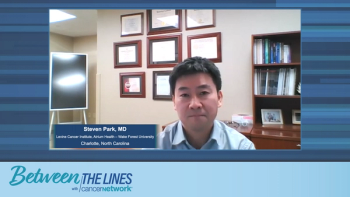
Closing out their review of tazemetostat in R/R FL, participants consider its practical use in practice alongside other novel treatment modalities.
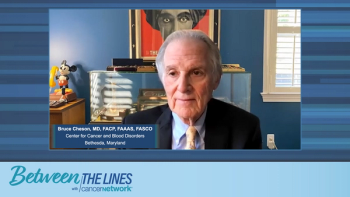
Drs Cheson and Park briefly review previous data from the E7438-G000-101 trial on tazemetostat in patients with wild-type or EZH2-mutant R/R FL, and then describe the findings of a more recent 2022 propensity score-matched analysis of the data that was intended to address baseline clinical differences between the two patient populations.
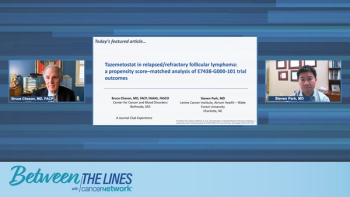
Opening their discussion on relapsed/refractory follicular lymphoma (R/R FL), expert participants review the spectrum of available treatments in this setting.

Here we critically analyze the role of PET/CT in the early assessment of Hodgkin lymphoma.

Here we review the role of interim PET/CT in diffuse large B-cell lymphoma (DLBCL), and also explore the question of whether new approaches to quantitative assessment improve the prognostic value of interim PET scans in both Hodgkin lymphoma and DLBCL.

With each passing year, chemotherapy is less and less a focus of interest. Instead, the focus is on the abundance of exciting new biologic and targeted agents that are bulldozing the therapeutic landscape in the lymphomas and chronic lymphocytic leukemia.

Clearly, eliminating a bone marrow biopsy in appropriate patients would be another step in the direction of minimizing the torture to which they are subjected.

To find a new cure for a disease, or at least to significantly prolong patient survival, requires a bit of insight and a lot of luck.

A number of recent treatment advances in the management of follicular lymphoma (FL), including the introduction of the anti-CD20 monoclonal antibody rituximab, have effectively shifted the primary therapeutic goal away from palliation and avoidance of toxicity toward the more proactive objective of extending survival. This paper reviews recent practice patterns in the broad context of the published findings from major phase III randomized trials; it documents potential gaps between trial results and actual practice, and the implications of these for continuing education of oncologists. Forty-three US-based community oncologists participated in a cross-sectional case survey during which 40 documented their management of 186 patients with newly diagnosed FL and 133 patients with relapsed FL, all of whom were treated after January 1, 2008. The findings from this initiative indicate that the majority of these patients did not have any major symptoms at presentation. Additionally, tolerance of and response to treatment, regardless of the regimen employed, were similar across the different age groups studied (<65, 65-74, ≥75 years). Therapies selected by the physicians surveyed in both the up-front and the relapsed settings broadly corresponded to the evidence-based published literature and were supported by treatment guidelines. In addition, a change in the proportional use of bendamustine/rituximab (BR) in the up-front treatment of FL from 2008 to 2010 was observed, suggesting that community oncologists are rapidly incorporating pivotal clinical trial results when deciding on individual patient management strategies.

he treatment of B-cell malignancies has been revolutionized by the availability of safe and effective monoclonal antibodies. The addition of rituximab to standard chemotherapy regimens prolongs the survival of patients with diffuse large B-cell lymphoma (DLBCL) and follicular non-Hodgkin lymphoma. Nevertheless, indolent and mantle cell lymphomas remain incurable, and 30% to 40% of patients with DLBCL still die from their disease. Much ongoing research has focused on optimizing monoclonal antibody use, integrating them into multiagent regimens, and developing newer antibodies. Attempts to improve on the efficacy of monoclonal antibody–based therapy have included altering the dosing schedule, optimizing patient selection, maintenance therapy, improving upon the rituximab molecule, radioimmunotherapy, as well as combinations with cytotoxic molecules and other novel agents. Preliminary data with a number of treatment regimens are promising in indolent and aggressive lymphomas. The eventual goal of targeted therapies is to individualize treatment to increase response and survival, while reducing treatment-related toxicity.

Mantle cell lymphoma (MCL) accounts for approximately 6% of non-Hodgkin’s lymphomas. Patients usually present with advanced disease, with a tendency for extranodal involvement. MCL is an aggressive lymphoma with moderate chemosensitivity, but it remains one of the most difficult therapeutic challenges. Complete response rates to chemotherapy range from 20% to 40%, with median survivals of 2½ to 3 years. Anthracycline-containing regimens do not prolong survival compared with nonanthracycline regimens. Single-agent rituximab (Rituxan) has produced response rates of about 30%, and when combined with an anthracycline-containing regimen, response rates increase to above 90%; however, an impact on survival has not yet been demonstrated. More intensive regimens such as hyperCVAD (hyperfractionated cyclophosphamide [Cytoxan, Neosar], vincristine, doxorubicin [Adriamycin], dexamethasone, methotrexate, cytarabine) with either stem cell transplant or rituximab have been associated with promising results.

Anyone who attended the2002 American Society ofHematology (ASH) meetingin Philadelphia couldnot help but be impressedby the number of reportsof clinical trials of biologicagents. In particular,monoclonal antibody–based strategies were describedin a broad range of malignant andbenign conditions. As the reports of singleagentactivity of drugs such as rituximab (Rituxan)diminished for lymphoma trials, thenumber of chemotherapy regimens to which theantibody has been added blossomed. Whensingle-agent data were presented, they oftenrepresented longer-term follow-up with additionalpatients, confirming the safety and efficacyof these agents. Some studies describedattempts at improving the activity of antibodies,whereas others have been evaluating their rolein new malignant and benign indications.

The non-Hodgkin’s lymphomas (NHL) are the fifth most common cause of cancer in men and women in the United States, and the fifth and sixth leading causes of cancer deaths, respectively. Approximately 54,000 new cases are projected to be diagnosed in the United States this year,[1] 25% to 30% of which are indolent histologies, with the remainder being aggressive tumors.

The 5-year survival of patients with locally advanced squamous cell cancers of the head and neck is still less than 30%. Treatment of these cancers involves significant functional impairment, diminished quality of life, and considerable time and expense. Local recurrence and distant metastases are still fairly common, and the development of second primary cancers has a significant impact on survival in patients with initial early-stage disease. Despite the success of combination chemoradiation in locally advanced head and neck cancers, these facts stress the need for improved treatment of this disease.

It is amazing how, over the past 5 years, the world of clinical research in the lymphoid malignancies has been totally redirected by one molecule called rituximab (Rituxan).

A number of molecularly targeted agents directed at critical pathways involved in cell survival and cell proliferation have recently entered clinical evaluation in children with cancer. These agents offer the potential for more effective anticancer therapy while diminishing acute and long-term toxic effects. Systematic evaluations of agents such as these are essential if continuing improvements in outcome are to be achieved in children with cancer. Brief summaries of the rationale for conducting studies of several agents in children are provided below. Following these summaries is a listing of phase I, phase I/II, phase II, and pilot studies of these agents in pediatric populations

Increasing data suggest that rituximab may have activity in a variety of uncommon B-cell malignancies. Although earlier preliminary data suggested a high response rate in hairy cell leukemia (HCL) (Thomas et al: Blood 94:705a[abstract 3116], 1999), the complete response rate of 20% in patients who had previously failed cladribine (Leustatin) therapy reported by Nieva et al was considered disappointing (abstract #1535). A more promising approach to patients with refractory HCL is the BL-22 immunotoxin, in which anti-CD22 is linked to a Pseudomonas exotoxin (Kreitman et al: N Engl J Med 345:241-247, 2001). Of 16 patients treated on a phase I study who had failed at least one purine analog, 13 responded, including 11 complete remissions. At a median of 16 months, only three complete responders relapsed and these were successfully reinduced.

Rituximab has been combined with a number of biological agents, including alpha-interferon (Davis et al: Clin Cancer Res 6:2644-2652, 2000; Kimby et al: Blood 96:577a[abstract 2479], 2000) and interleukin (IL)-12 (Ansell et al: Blood 99:67-74, 2002). The current design of combination trials is often based more on the availability of active agents than on any scientific rationale. The bcl-2 protein is overproduced in 60% to 80% or more of follicular NHL patients and in more than 80% of patients with CLL. A result is decreased apoptosis related to the prevention or slowing of activation of caspases. A resulting effect is a form of multidrug resistance. bcl-2 knockout mice have severe immunodeficiency and lymphocytopenia, suggesting that bcl-2 may be required for the viability of these cells. G3139 is an antisense bcl-2 oligonucleotide currently in clinical trials for a variety of solid tumors and hematologic malignancies.

Several reports have focused on other interesting monoclonal antibodies under evaluation in patients with lymphoid malignancies. Apolizumab (Hu1D10) is a humanized monoclonal antibody directed at an human leukocyte antigen epitope on malignant and benign B cells. The expression is somewhat variable by disease, but cells from about 40% to 60% of patients are positive for the 1D10 antigen.

The initial experience with rituximab in chronic lymphocytic leukemia (CLL)/small lymphocytic lymphoma (SLL) was disappointing. In the first six papers, primarily including patients with relapsed and refractory SLL, there were no complete remissions, with an overall response rate of about 12%, of brief duration (McLaughlin et al: J Clin Oncol 16:2825-2833, 1998; Maloney et al: Blood 90:2188-2195, 1997; Nguyen et al: Eur J Haematol 62:76-82, 1999; Piro et al: Ann Oncol 10:655-661, 1999; Winkler et al: Blood 94:312a [abstract 1396], 1999; Foran et al: J Clin Oncol 18:317-324, 2000).

Rituximab as a single agent induces responses in about 32% of patients with aggressive B-cell NHL, although these responses tended to be partial and brief (Coiffier et al: Blood 92:1927-1932, 1998). Nevertheless, because of its favorable toxicity profile, the antibody was rapidly incorporated into combination chemotherapy regimens, most often with CHOP, the standard program for this histology. Vose and coworkers (J Clin Oncol 19:389-397, 2001) published the results of a multicenter phase II trial in which the antibody was administered on day 1 of each 21-day cycle, with CHOP beginning on day 3, in contrast to the schedule reported by Czuczman et al (J Clin Oncol 17:268-276, 1999).

How the monoclonal antibodies work in lymphoid malignancies remains unclear. Several studies presented at the 2001 American Society of Hematology (ASH) meeting provided insight into their mechanisms of action, and also into how cells become resistant to their effects.

Radioimmunotherapy is another promising area of lymphoma therapy. The two radioimmunoconjugates (RICs) that have been the most widely studied in patients with follicular, low-grade NHL are tositumomab/iodine-131 tositumomab (Bexxar) and yttrium-90 ibritumomab tiuxetan (Zevalin). Both have demonstrated a high level of activity in patients who have failed chemotherapy and rituximab (Witzig et al: J Clin Oncol 17:3793-3803, 1999; Kaminski et al: J Clin Oncol 19:3918-3928, 2001).

Rituximab was approved by the US Food and Drug Administration largely on the basis of the pivotal trial conducted in 166 patients with follicular/low-grade NHL who had failed a median of two prior chemotherapy regimens (McLaughlin et al: J Clin Oncol 16:2825-2833, 1998). The response rate was 48%, including 6% complete remissions (CR), lasting a median of about a year. Attempts to improve on these results by using rituximab as initial therapy have not provided convincing evidence for improved patient outcome (Hainsworth et al: Blood 95:3052-3056, 2000; Colombat et al: Blood 97:101-106, 2001). The high response rates in the French trial by Colombat and co-workers are related in large part to the favorable nature of the patient population. Moreover, median duration of response was only about a year. In the study from Hainsworth et al mentioned above, response rates when calculated by standard methods were comparable to those seen in relapsed and refractory patients.

Based on its B-cell-depleting properties, rituximab as a single agent or in combination with immunosuppressive chemotherapy drugs has been used to successfully treat nonmalignant hematologic conditions such as immune thrombocytopenic purpura (ITP) and autoimmune hemolytic anemia, cold agglutinin disease, and pure red cell aplasia (Hegde et al: Proc Am Soc Clin Oncol 20:305a[abstract 1218], 2001; Perrota and Abuel: Blood 92:88b[abstract 3360, 1998; Saleh et al: Blood 96:252a[abstract 1086], 2000; Lee et al: Blood 96:596a[abstract 2560], 2000; Rai et al: Blood 96:754a[abstract 3264, 2000; Zecca et al: Blood 97:3995-3997, 2001; Stasi et al: 98:952-957, 2001), with encouraging success. Anecdotal reports also suggest activity for rituximab in systemic lupus erythematosus, rheumatoid arthritis, inflammatory arthropathy, and paraneoplastic pemphigus (Edwards and Cambridge: Rheumatology 40:205-211, 2001; Protheroe et al: Rheumatology 38:1150-1152, 1999; Heizmann et al: Am J Hematol 66:142-144, 2001).

Neuroblastoma is a pediatric malignant tumor of the postganglionic sympathetic nervous system that usually develops in the adrenal gland or in nonadrenal abdominal or thoracic sites.[1] It is the most common malignancy in infants and the most common extracranial solid tumor of childhood, with approximately 650 cases diagnosed annually in the United States.[2] The dramatic age-related survival differences among neuroblastoma patients with a similar tumor stage emphasize the heterogeneity of neuroblastoma pathobiology. Early research efforts to understand the pathobiology of neuroblastoma[3-5] and the significant progress made in neuroblastoma molecular biology[6] have informed the clinical treatment of neuroblastoma.

Fenretinide (N-4-hydroxyphenyl-retinamide, or 4-HPR) is a semisynthetic retinoid that was initially developed as a low-dose chemopreventative agent.[1-3] Unlike other naturally occurring retinoids such as all-trans, 13-cis, and 9-cis retinoic acids, fenretinide does not induce systemic catabolism that interferes with the maintenance of effective plasma levels during long-term use. This characteristic, combined with the agent’s low toxicity and its ability to block aspects of carcinogenesis, provided the rationale for the development of fenretinide in lower doses as a chemoprevention agent for breast, prostate, and bladder cancer.

BMS-247550 is a methyl, semi-synthetic analog of the natural product epothilone B. Provided to the National Cancer Institute (NCI) by Bristol-Myers Squibb, BMS-247550 was chosen for clinical development because it demonstrated

STI571 (Gleevec) is a member of the 2-phenylaminopyrimidine family of adenosine triphosphate (ATP) binding site inhibitors of protein tyrosine kinase. It potently inhibits the tyrosine kinase activity of Abl and Bcr-Abl,[1-3] platelet-derived growth factor receptor (PDGF-R), and Kit (stem cell factor receptor).[4-6]
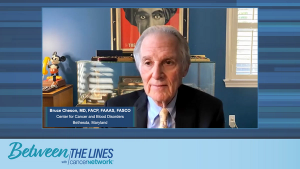
Published: September 29th 2022 | Updated:
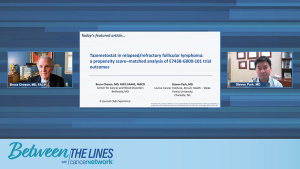
Published: September 22nd 2022 | Updated:
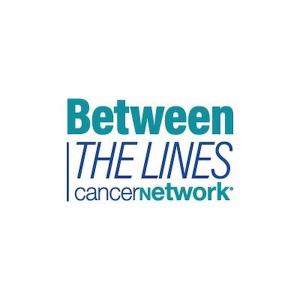
Published: November 3rd 2022 | Updated:
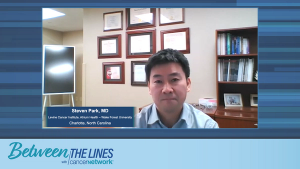
Published: October 7th 2022 | Updated:

Published: November 1st 1997 | Updated:

Published: March 1st 2002 | Updated: